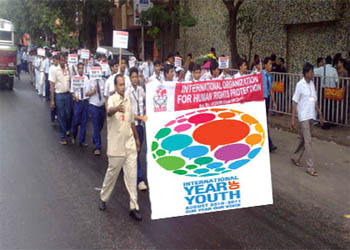GAYA: In a virtual repeat of similar blasts engineered on March 20 in 2009, May 17 in 2012 and August 3 in 2013, Maoists on Tuesday night executed yet another blast to paralyse train movement on the Grand Chord section, the lifeline of the Indian economy. The incident occurred minutes before the commencement of the bandh called by the CPI (Maoist) to register protest against alleged police excesses and firing in Aurangabad. Like previous such 'blasts', the Maoists timed it to coincide with the movement of prestigious Rajdhani Express, apparently to get more publicity. The blast, which created a 3ft-deep ditch below the track near Lahas village under the Rafiganj police station area in Aurangabad district, also dislocated the overhead wire that provides power to electric locos. The pilot engine, introduced in the wake of the September 2002 Rajdhani accident, got derailed. However, the driver and assistant driver were not injured. The Bhubaneswar-New Delhi Rajdhani Express remained stranded at Guraru station, 10km from the blast site, with 800-odd passengers, crew and pantry car staff keeping themselves bolted from inside for the whole night. The passengers on the Howrah-New Delhi Rajdhani Express, stranded one station away at Paraiya, 16km from the blast site, did the same. The blast sent the railway and police officials in a tizzy as they were tasked with providing security to estimated 10,000 rail users on different long-distance trains which got stuck at remote stations between Mughalsarai in Up and Dhanbad in Jharkhand. Immediately after the blast, SSP Nishant Tiwari of neighbouring Gaya district directed his police officers to rush to Guraru and Paraiya stations to provide security to the passengers of the Rajdhani trains stranded at the two stations.
The traffic on the Up and Down tracks could be restored after ten hours in the forenoon on Wednesday, according to Gaya railway station manage
![""""]()




